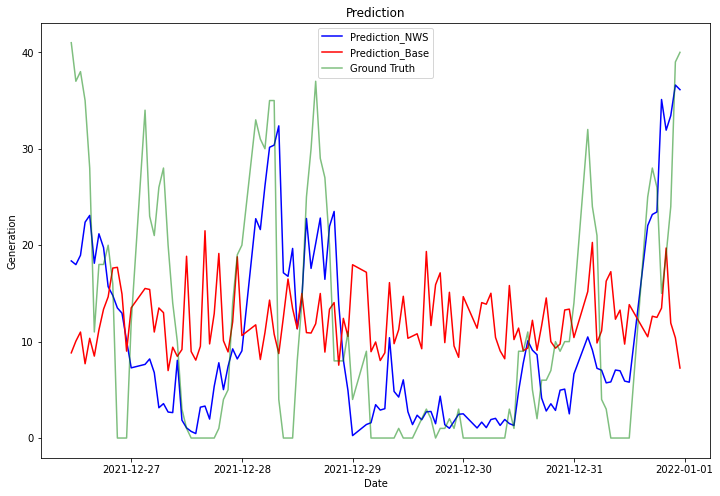CEEPR Working Paper
2023-16, September 2023
Vivienne Zhang
Wind electricity generation grew exponentially in the past two decades from 6 billion kilowatt-hours (kWh) in 2000 to 380 billion kWh in 2021 and today accounts for more than 9% of total utility-scale power generated in the US. However, wind power is an intermittent renewable resource, and accurate forecasting of wind power generation is essential to grid management. Improving the predictability of wind power generation is challenging for many reasons, one of which is a lack of empirical data, which are proprietary and confidential. While there exist a multitude of studies on how to build the best machine learning model using simulated data, few studies are based on empirical data from a cluster of wind farms.
This study uses actual generation data between 2016 and 2021 from seven anonymized wind farms in the United States ranging from ~50 Megawatts (MW) to 235 MW in size. In addition to the generation datasets, we also collect local public weather station data from the National Oceanic and Atmospheric Administration (NOAA), as well as wind speed forecast data, which were extracted from the National Weather Service (NWS) archive for the first time for the purpose of studying wind power forecasting. The approximate locations of the weather stations and the wind farms are shown in Figure 1. We then use the same machine learning method, a Long Short-term Memory network, to predict wind power generation for all seven power plants. While controlling for the prediction method, we run two experiments: one using only the past generation and weather measurement data; the other using the former plus the wind speed forecasts from NWS.

Figure 1. Locations of Wind Farms vs Local NOAA weather stations. (Red represents the wind farm, while yellow is the weather station)
We find that the predictability of wind power generation can be significantly improved when we add wind speed forecasts from the NWS to the input dataset, instead of using only past weather measurement data. All seven power plants see an increase in wind power generation predictability by more than 5% as measured in Mean Absolute Percentage Error. The highest improvement in predictability is more than 8%. The result is significant given that experiments using more elaborate machine learning neural networks consistently show less than 2% improvement. A figure plotting a sample of the two predictions vs ground truth data is shown below. This result can be explained by the fact that wind speed changes are often stochastic. It may be difficult for machine learning, a statistics-based method, to capture the limited statistical relationship between past and future wind speeds, the deciding factor in wind power generation. On the other hand, wind speed forecasts from the NWS are made by physics-based methods, which may explain why the predictions follow the ground truth data more closely when sudden changes occur. It should be noted that wind speed forecasts are made every 3 hours by NWS while wind speed changes happen much more frequently. This suggests that further improvement may be obtained if wind speed forecasts are made in greater time granularity.

Figure 2. LSTM Performance – 24 hour-ahead: Baseline (red) vs NWS (blue) vs Ground Truth (green) for one wind project.
The economic effect of improvements in wind power forecasting accuracy is then studied using a simulation with market data from the Midcontinent Independent System Operator (MISO) and the Southwest Power Pool (SPP). Depending on the trading strategy, we find that while the more accurately forecasted energy can generate annual savings of more than $300,000 in one market, it can also lead to losses in another. This is because earnings are highly dependent on the price differences in Day-ahead and the Real-time electricity market, which vary significantly across markets and time periods. More research is needed to assess the economic benefits of more accurate wind power generation forecasting.



